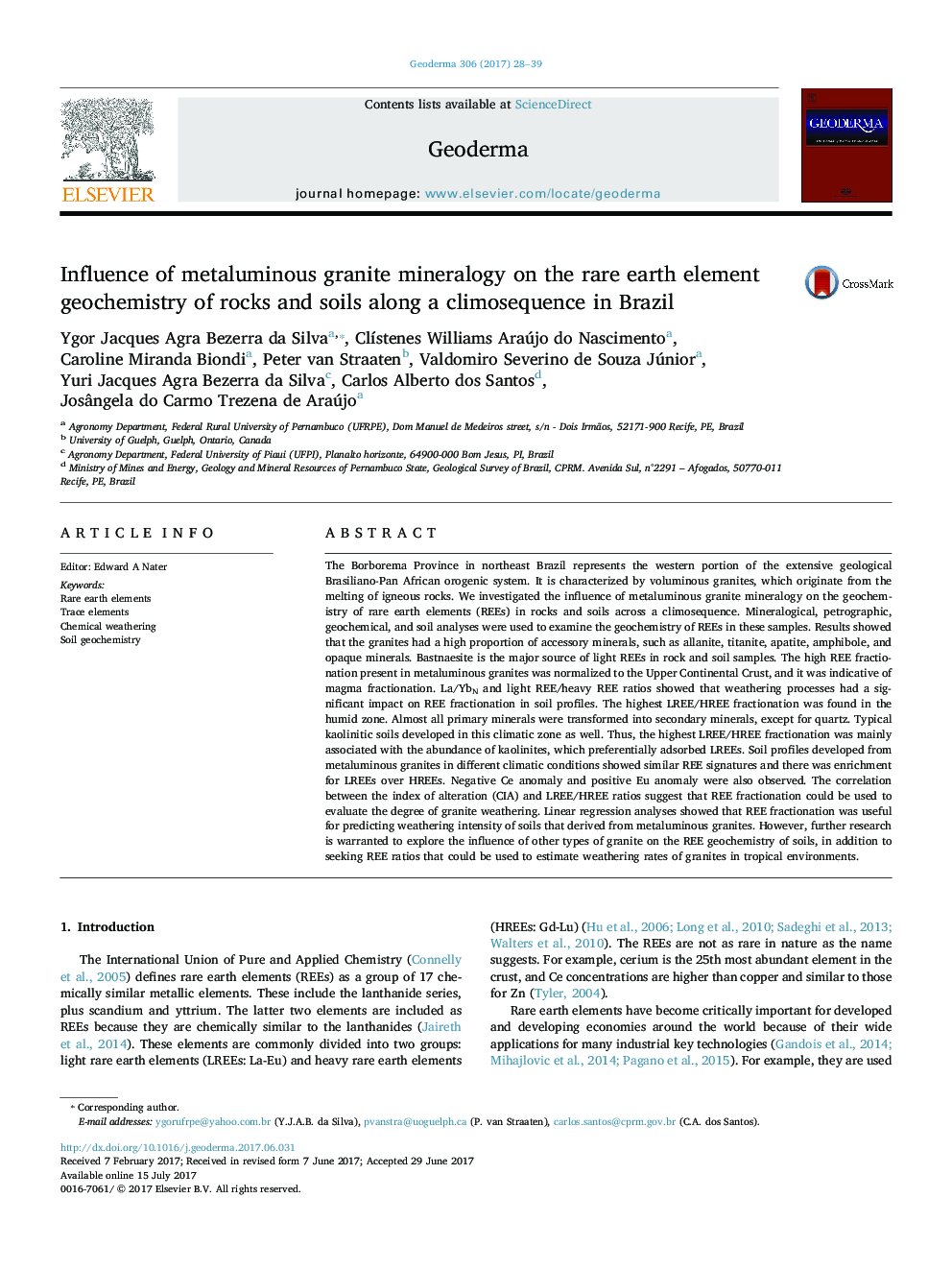| کد مقاله | کد نشریه | سال انتشار | مقاله انگلیسی | نسخه تمام متن |
|---|---|---|---|---|
| 5770453 | 1629411 | 2017 | 12 صفحه PDF | دانلود رایگان |
- XRD, SEM and EDS are used to relate granite signatures and REE geochemistry in soils.
- I-type granite mineralogy affects the REE geochemistry of soils.
- Bastnaesite seems to be the major source of REE in I-type granite and their soils.
- Weathering processes showed significant impact on REE fractionation in soil profiles.
- The highest LREE/HREE fractionation was found in the humid zone.
The Borborema Province in northeast Brazil represents the western portion of the extensive geological Brasiliano-Pan African orogenic system. It is characterized by voluminous granites, which originate from the melting of igneous rocks. We investigated the influence of metaluminous granite mineralogy on the geochemistry of rare earth elements (REEs) in rocks and soils across a climosequence. Mineralogical, petrographic, geochemical, and soil analyses were used to examine the geochemistry of REEs in these samples. Results showed that the granites had a high proportion of accessory minerals, such as allanite, titanite, apatite, amphibole, and opaque minerals. Bastnaesite is the major source of light REEs in rock and soil samples. The high REE fractionation present in metaluminous granites was normalized to the Upper Continental Crust, and it was indicative of magma fractionation. La/YbN and light REE/heavy REE ratios showed that weathering processes had a significant impact on REE fractionation in soil profiles. The highest LREE/HREE fractionation was found in the humid zone. Almost all primary minerals were transformed into secondary minerals, except for quartz. Typical kaolinitic soils developed in this climatic zone as well. Thus, the highest LREE/HREE fractionation was mainly associated with the abundance of kaolinites, which preferentially adsorbed LREEs. Soil profiles developed from metaluminous granites in different climatic conditions showed similar REE signatures and there was enrichment for LREEs over HREEs. Negative Ce anomaly and positive Eu anomaly were also observed. The correlation between the index of alteration (CIA) and LREE/HREE ratios suggest that REE fractionation could be used to evaluate the degree of granite weathering. Linear regression analyses showed that REE fractionation was useful for predicting weathering intensity of soils that derived from metaluminous granites. However, further research is warranted to explore the influence of other types of granite on the REE geochemistry of soils, in addition to seeking REE ratios that could be used to estimate weathering rates of granites in tropical environments.
Journal: Geoderma - Volume 306, 15 November 2017, Pages 28-39
